Product Details
| Product Name:
Aloperine |
CAS No.:
56293-29-9 |
| Purity:
99.88% |
Supply Ability:
10g |
| Release date:
2024/11/19 |
Product Introduction
Bioactivity
| Name | Aloperine |
| Description | Aloperine exhibits anti-inflammatory, antibacterial, antiviral, and anti-tumor properties. |
| Cell Research | Cells are seeded in 96-well plates in 100-μL culture medium. After incubation of 4 hours for leukaemia cells and of 24 hours for solid cancer cells, experimental media containing either excipient control or Aloperine are added to appropriate wells. Five concentrations of Aloperine for 48-hour treatment are used to determine the in vitro IC50 growth inhibitory values of Aloperine in cancer cells. After incubation, 10 μL of MTT solution (5 mg/mL) is added to each well. The plates are then incubated for 4 hours at 37 °C. Intracellular formazan crystals are dissolved by addition of 100 μL of isopropanol-HCI-SDS solution to each well. After an overnight incubation at 37 °C, the optical density of the samples is determined at 570 nm. DNA fragmentation is analysed after the extraction of DNA from cells exposed to the indicated doses of Aloperine for 48 hours using apoptotic DNA ladder kit. For autophagy detection, cells are collected and incubated with PBS containing 5 μM acridine orange for 15 minutes. The acridine orange is removed and the cells are resuspended in 100 μL of PBS. Fluorescent micrographs are obtained with an inverted fluorescent microscope. Autophagy is quantified based on the mean number of cells displaying intense red staining for three fields (containing at least 50 cells per field) for each experimental condition.(Only for Reference) |
| In vitro | When topically applied to NC/Nga mice, Aloperine significantly and dose-dependently reduced 2,4-dinitrofluorobenzene (DNFB)-induced dermatitis as indicated by dermatitis scores and ear thickness on days 13 and 14. Additionally, a 1% topical application of Aloperine on BALB/c mice inhibited the increase in ear swelling and redness triggered by DNFB, and markedly reduced the upregulation of tumor necrosis factor-alpha (TNF-α), interleukin-1 beta (IL-1β), and interleukin-6 (IL-6) mRNA and protein levels in ear biopsy homogenates. Aloperine dose-dependently diminished DNFB-induced lymphocyte and eosinophil infiltration, as well as mast cell infiltration in treated regions. Histological examination of ear tissues from treated NC/Nga mice also showed a clear dose-dependent decrease in the levels of cytokines TNF-α, IL-1β, and IL-6. Furthermore, Aloperine significantly lowered the elevated levels of IL-4, IL-13, and IFN-γ induced by DNFB, while dose-dependently increasing IL-10 levels, indicating its effective modulation of inflammatory responses. |
| In vivo | Contrary to its effect on leukemia cells, Aloperine at a concentration of up to 1 mM did not significantly reduce the viability of normal PBMNCs after 72 hours. A 20 μM dose of Aloperine administered for 48 hours was observed to induce apoptosis and autophagy in HL-60 cells in a dose-dependent manner. The strongest cytotoxic effect of Aloperine on HL-60 cells was observed at 72 hours, with an inhibition rate of 94.1%. |
| Storage | Powder: -20°C for 3 years | In solvent: -80°C for 1 year | Shipping with blue ice. |
| Solubility Information | Ethanol : 46 mg/mL (197.96 mM)
DMSO : 55 mg/mL (236.7 mM)
|
| Keywords | Inhibitor | Filovirus | Aloperine | Autophagy | Human immunodeficiency virus | inhibit | HIV | Apoptosis |
| Inhibitors Related | Neomycin sulfate | Emtricitabine | Dextran sulfate sodium salt (MW 4500-5500) | Sulfamethoxazole sodium | Hydroxychloroquine | Lamivudine | Guanidine hydrochloride | Doxycycline | Tributyrin | Paeonol | Naringin | Oleic acid |
| Related Compound Libraries | Bioactive Compound Library | Traditional Chinese Medicine Monomer Library | Alkaloid Natural Product Library | Anti-Viral Compound Library | Natural Product Library | Anti-Inflammatory Traditional Chinese Medicine Compound Library | Natural Product Library for HTS | Anti-Aging Compound Library | Anti-infective Natural Product Library |
Company Profile Introduction
Target Molecule Corp. (TargetMol) is a global high-tech enterprise, headquartered in Boston, MA, specializing in chemical and biological research product and service to meet the research needs of global customers.
TargetMol has evolved into one of the biggest global compound library and small molecule suppliers and a customer based on 40+ countries. TargetMol offers over 80 types of compound libraries and a wide range of high-quality research chemicals including inhibitors, activator, natural compounds, peptides, inhibitory antibodies, and novel life-science kits, for laboratory and scientific use. Besides, virtual screening service is also available for customers who would like to conduct the computer-aided drug discovery.
You may like
-
CAS:18385-59-6
$58.00 / 1mg
-
-
CAS:804-30-8
$37.00 / 10mg
Recommended supplier
| Product name |
Price |
|
Suppliers |
Update time |
|
|
$0.00/1G |
VIP4Y
|
WUHAN FORTUNA CHEMICAL CO., LTD
|
2023-02-03 |
|
|
$3.00/1KG |
VIP6Y
|
Career Henan Chemical Co
|
2020-01-18 |
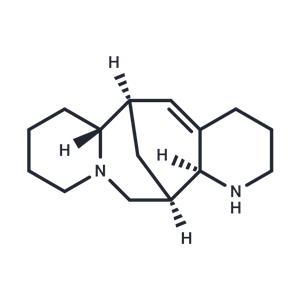



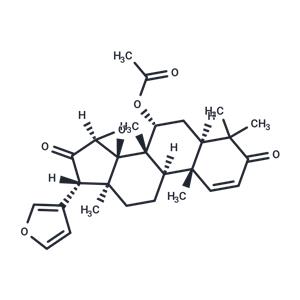
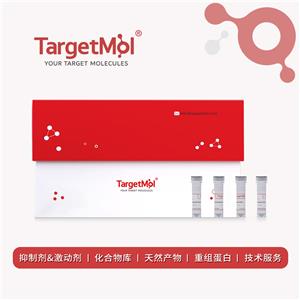
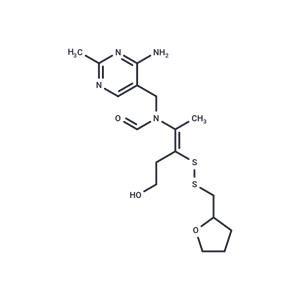
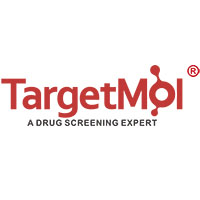
 United States
United States